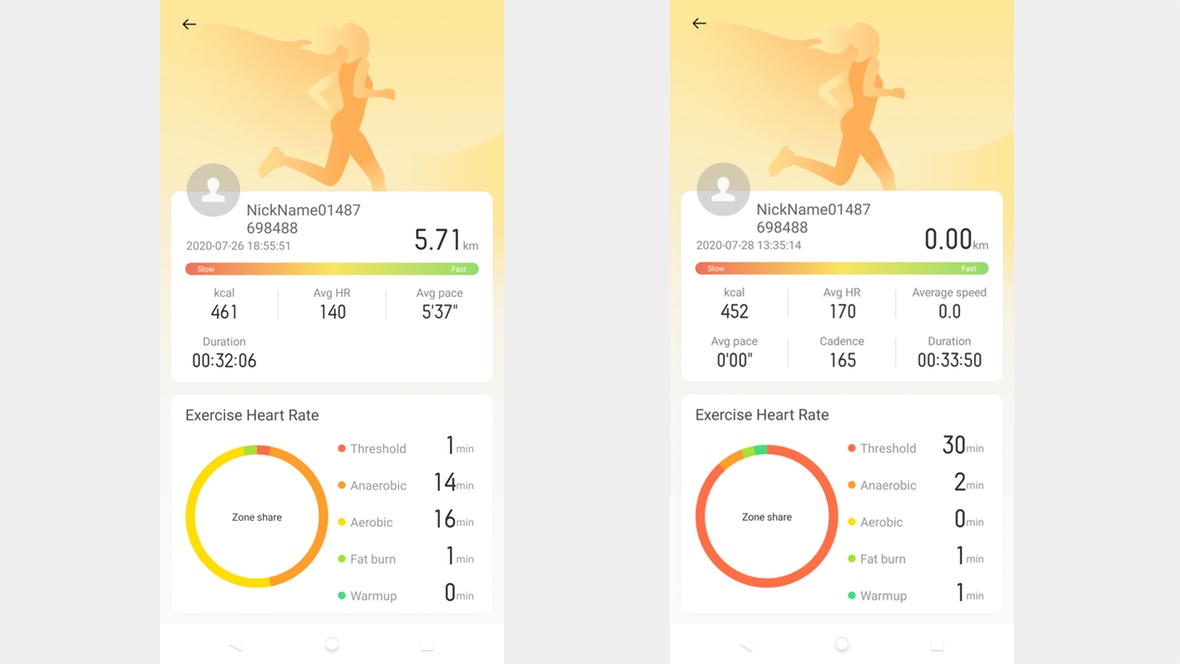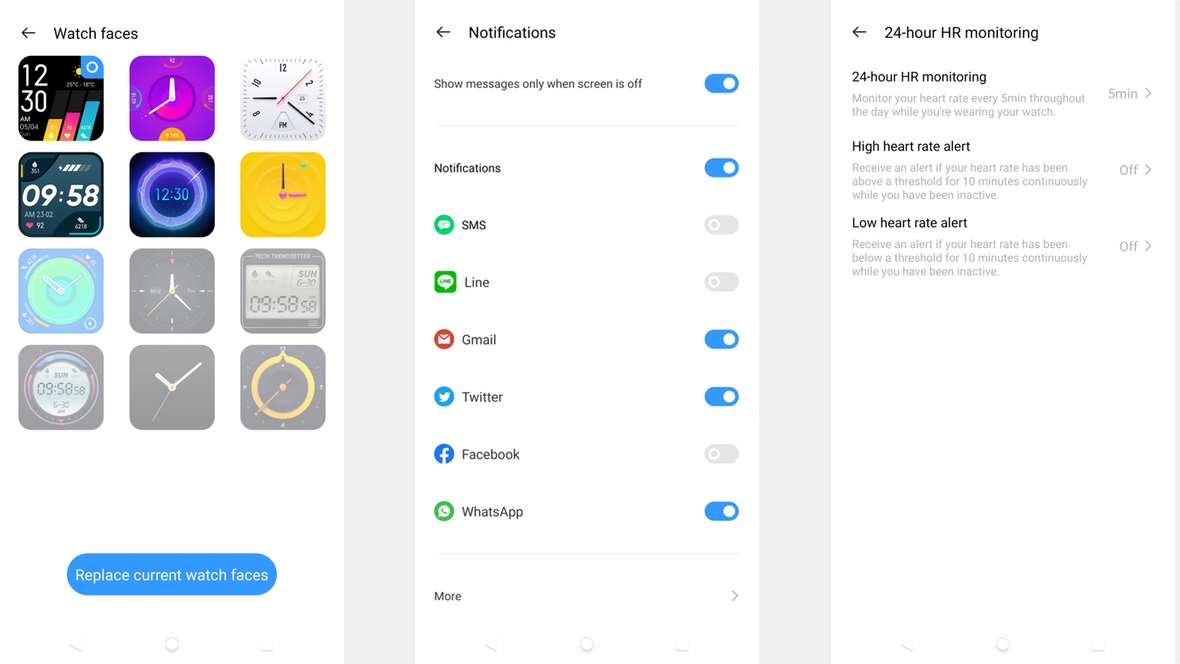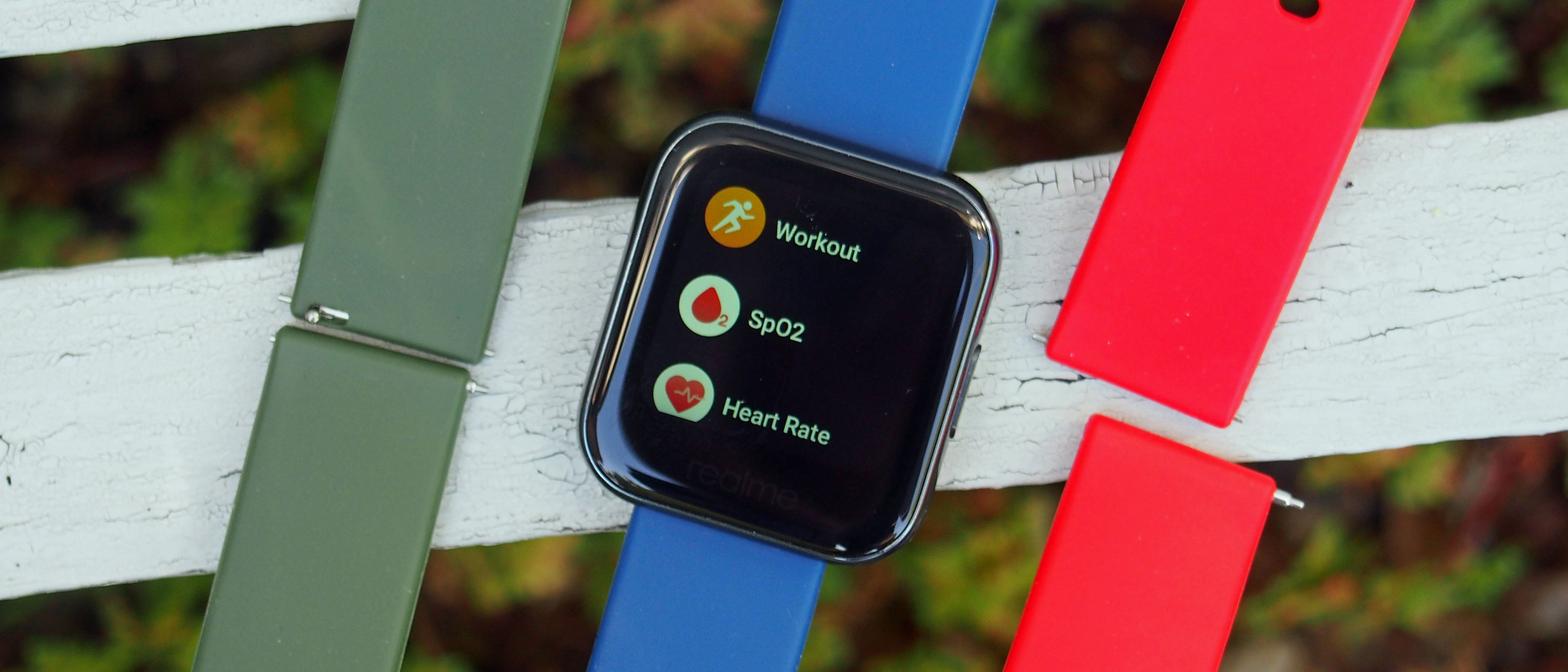TechRadar Verdict
The Realme Watch is a fitness tracker in a smartwatch body that does a solid enough job overall for the price. If you’re looking for something that tracks the basics well and has good battery life, then it will have appeal. If you want more in the way of rewarding sports tracking, smartwatch features and slicker performance, then it’s definitely worth spending more to get that.
Pros
- +
Comfortable to wear
- +
Reliable fitness tracking
- +
Decent heart rate accuracy
Cons
- -
Screen responsiveness
- -
Underwhelming sports tracking
- -
Ambitious battery life claims
Why you can trust TechRadar
Two-minute review
The Realme Watch is a smartwatch for anyone that wants those features you’d associate with a connected watch, but for a lot less money.
This is Oppo spinoff Realme’s first attempt at making a smartwatch after initially entering the wearable space with the Realme Band.
Like its fitness band, it squeezes a fair amount into that watch body including some features you’d commonly associate with more expensive watches. There’s 24/7 activity tracking, a built-in heart rate monitor and even an SpO2 sensor. Connected GPS will also let you track outdoor activities with the ability to view notifications and control music playback for smartwatch fans.
The Realme Watch adopts the Apple Watch look in terms of design with a touchscreen display and swappable watch straps. Unlike Apple’s smartwatch, there’s the promise of a week’s worth of battery life and maybe more depending on how you use it. This is however an option for Android phone owners only.
It’s a supremely budget smartwatch that on the whole performs well, but you do have to make some compromises in design and performance that might persuade you to spend a little more money for a better all-round smartwatch experience.
Realme Watch price and release date

The Realme Watch launched in May 2020 and is priced at £49.99 / $50 /AUS$169. You can also buy additional bands in red, green and blue all at £10.50 / $14 / AUS$19.
Design and display
- 1.4-inch, 320 x 320 color touchscreen display
- 20mm interchangeable straps
- IP68 water resistance rating
The Realme Watch looks like a mix of an Apple Watch and a Fitbit Versa albeit with a notably more plastic design. It features a 36.5mm case, measures in at 11.8mm thick and weighs just 31g. It's a small statured watch that’s light to wear, but not too light to make it feel cheap. The glossy finish on the casing gives off the impression of something more expensive, but this is definitely a plastic affair.
There’s a solitary physical button to wake up the watch, but the touchscreen display is your main means of navigation. It’s not a fully formed display however, with a large chunk taken out from the bottom of it. It’s less noticeable with a dark watch face on, but it’s disappointing to see that there’s not more screen to make use of here.
It’s certainly not best in class in terms of screen quality either, though does offer good brightness on the whole. For indoor viewing, there’s no visibility issues. Outdoor in bright sunlight, you’ll need to turn up the screen to full brightness to get the best viewing experience. It is nice to see that Gorilla Glass 3 is in place to toughen things up, though it’s disappointing to discover this doesn’t have an always-on display mode.


The bigger issue with the screen is responsiveness. In that it’s not very good. It can be at times slow to respond to swipes and taps and can be more of an issue when your digits get a little sweaty from a workout.
The watch comes with a black silicone classic strap that can be removed to swap in one of Realme’s fashion bands. These are still made from silicone , but offer up a few brighter colors to liven up the look. It also swaps the watch-style buckle for a single button clasp. They don’t feel the most luxurious of bands, but they’re fitting for a workout and are generally comfortable to wear.
If you want to go swimming with the Realme Watch, well, you probably shouldn't. It comes with an IP68 water resistance rating, which means it’s safe for withstanding some sweat or surviving you wearing it washing the dishes. It does mean it’s less suitable for jumping in the shower or getting a few lengths in with it.
Performance and software
- Works with Android phones only
- View first and third party notifications
- Music playback controls
Realme uses its own operating system, which is currently only fit to work when it’s paired up with an Android phone. It hasn’t shared details on processing power or memory, but what we can say about performance is that it’s not perfect. While menus and features launch without issue, there is some noticeable lag swiping through screens.
The software experience on the whole is pretty straightforward at least. Swipe down to see notifications from both first and third party apps. You can expand and swipe through to read messages. The only action you can take after that is to dismiss them.
Swipe up and you'll find the main menu, which on the smartwatch front offers a decent amount. You can control music playback on your phone, though not during exercise. There’s a remote camera shutter mode and the ability to pull in weather forecasts when paired to your smartphone.

Realme also plans to roll out a software update to let you control smart home devices like speakers and lamps, but that’s only if you own Realme’s smart devices.
Swipe left and you’ll find a series of widgets dedicated to data like heart rate, recent sleep and your daily activity tracking stats. You can also switch things up in the watch face department. Pressing down on the watch face will serve up a handful of different watch faces with more available in Realme’s companion app.
That companion app is known as Realme Link and is your place to review health and fitness data as well as customize watch settings. It’s an app that really keeps to the basics. You’ll find a snapshot of fitness data, which you can dig deeper to explore trends. There’s also access to watch settings like controlling types of notifications you’ll be able to view and enabling features like music playback control and the find my phone feature.
If you want to push your data to other platforms and apps, Realme does let you do that, but right now that currently only stretches to Google Fit.
Fitness
- Continuous heart rate monitoring
- SpO2 sensors
- Connected GPS
Tracking your health and fitness is what the Realme Watch does best and, for the money, it offers a fair amount as far as what it promises to record and monitor.
Let’s start with the basics. It will track steps, distance covered, automatically monitor sleep, and record calorie burn. There’s no altimeter here, so you won’t be able to track elevation like stairs climbed however. The accuracy of those features largely held up against a rival fitness tracker and a dedicated sleep tracker. Sleep tracking is kept to the basics breaking down deep, light and REM sleep. It does at least let you view some of that data on the watch as well as inside of the app.
There’s also the option to continuously monitor heart rate, letting you sample readings throughout the day from intervals ranging from 5 minutes all the way up to 30 minutes. Again, the reliability of that data fared well against a dedicated heart rate chest strap monitor.

One surprising feature to find is the SpO2 sensor, letting you take on the spot measurements of blood oxygen levels as another way to assess your current state of health and fitness. Those measurement readings take around a minute to take and are stored in the Realme companion app. They were accurate too, when compared to a pulse oximeter.
You also get some useful reminder features in the way of inactivity alerts and a nudge to drink some water to motivate you to keep up regular habits. A meditation mode also brings the similar kind of guided breathing exercise features we’ve already seen crop up on the Apple Watch and Google’s Wear OS watches among others.
If you’d like to take things beyond the basics, there are sports tracking modes onboard here too. From the Workout screen, you can track outdoor runs, walks, indoor running, outdoor cycling and also the likes of cricket and yoga. Though if you’re hoping it will be able to recognize when you break into cat pose, you’ll be sadly disappointed. Aside from running and cycling modes, you can expect to just see heart rate, workout duration and calories burned in real time.



For running and cycling, there’s no built-in GPS, but you can use your phone’s GPS to better track those outdoor activities. On the treadmill, you’re relying on the accelerometer to track distance. From an accuracy point of view, it tended to overshoot on distance and report inaccurate data for running metrics like cadence. We also experienced issues where it failed to track distance at all.
That heart rate monitor can also be used for exercise too and is available to offer real-time readings and alerts that actually hold up well against a Polar heart rate chest strap. Like many wrist-based sensors though, it struggled for accuracy during high intensity activity like indoor bike interval training and running intervals. For general exercise, it seems to do a decent job.
Realme even found room to squeeze in automatic activity recognition support for running and walking, something you will also find on Fitbit and Samsung’s watches. Unfortunately, it wasn’t something that worked all well for us, often taking it’s time to recognize when you’d started an exercise or activity. You’re better off making sure you manually track those activities.
Battery life
- 160mAh battery
- 7-9 days battery life
- 20 days in power saving mode
The Realme Watch promises to give you over a week’s worth of battery life, but those numbers are based on Realme’s lab tests. In reality, it’s fair to say it’s been a bit over optimistic with those numbers.
We tended to get closer to four days, maybe five at a stretch as opposed to anywhere near a full week. If you’re regularly using all of the key features like continuous heart rate monitoring, notification support and cranking up the screen brightness, that’s what you can expect to get.
Realme does also include a power saving mode that strips the experience down to showing the time and battery status. If you’re running low and want a little extra use out of it, it’s a useful feature to keep things going a bit longer.
When you do run out of battery, Realme uses a puck-style charging cradle that clips onto the back of the device. It tended to take over an hour to go from zero to hundred percent, so it’s a relatively nippy charger at least.
Should I buy the Realme Watch?

Buy it if...
You want a fitness tracker that looks like a watch
The Realme Watch is well equipped for step tracking, sleep monitoring and continuous heart rate monitoring with a nice collection of watch faces and a streamlined app to show that data off.
You’re on a really tight budget
For the price, the Realme Watch does give you a fair amount. An SpO2 sensor and guided breathing are the kind of features you’d expect to find on a device that does cost more.
You need a cheaper heart rate tracker
We've found the heart rate tracking on the Realme Watch to be strong, so if you're after a cheaper way of monitoring your BPM this may be made for you.
Don't buy it if...
You can spend a bit more
If you can stretch to spending a little more, there are options from the likes of Amazfit that can offer more in the way of looks and more reliable sports tracking.
You’re a runner or a cyclist
While you do get connected GPS, the sports tracking in general is pretty basic than what you get from a cheap sports watch that costs a little more.
You want more of a smartwatch
You don’t get a built-in music player, apps or payments here. That’s not surprising given the price, but if you want a smartwatch, you’ll be better served elsewhere.
First reviewed: July 2020
Michael is a freelance journalist who has covered consumer technology for over a decade and specializes in wearable and fitness tech. Previously editor of Wareable, he also co-ran the features and reviews sections of T3, and has a long list of bylines in the world of consumer tech sites.
With a focus on fitness trackers, headphones, running wearables, phones, and tablet, he has written for numerous publications including Wired UK, GQ, Men's Fitness, BBC Science Focus, Metro and Stuff, and has appeared on the BBC Travel Show. Michael is a keen swimmer, a runner with a number of marathons under his belt, and is also the co-founder of YouTube channel The Run Testers.

